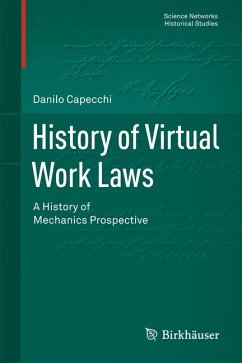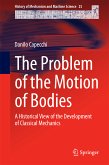The book begins with the first documented formulations of laws of virtual work in the IV century BC in Greece and proceeds to the end of the XIX century AD in Europe. A significant space is devoted to Arabic and Latin mechanics of Middle Ages. With the Renaissance it began to appear slightly different wordings of the laws, which were often proposed as unique principles of statics. The process reached its apex with Bernoulli and Lagrange in the XVIII century. The book ends with some chapters dealing with the discussions that took place in the French school on the role of the Lagrangian version of the law of virtual work and its applications to continuum mechanics.
Dieser Download kann aus rechtlichen Gründen nur mit Rechnungsadresse in A, B, BG, CY, CZ, D, DK, EW, E, FIN, F, GR, HR, H, IRL, I, LT, L, LR, M, NL, PL, P, R, S, SLO, SK ausgeliefert werden.
"The book under review is a survey work that covers the whole span of history from antiquity to the middle of the nineteenth century ... . a substantial contribution to the history of physical science and will become a standard reference source for the history of mechanics. ... Throughout the book there are quotations and passages from primary sources, translated into English. ... The bibliography contains extensive references to the secondary literature ... ." (Craig G. Fraser, Mathematical Reviews, June, 2013)









